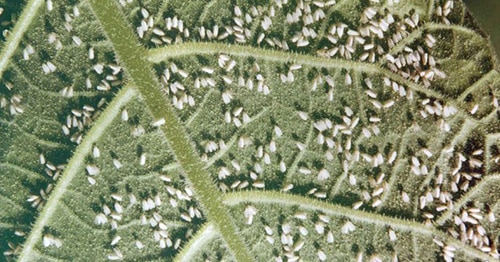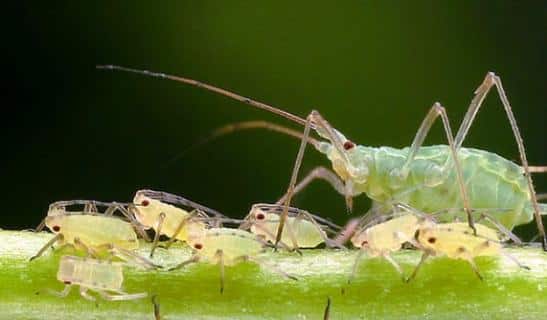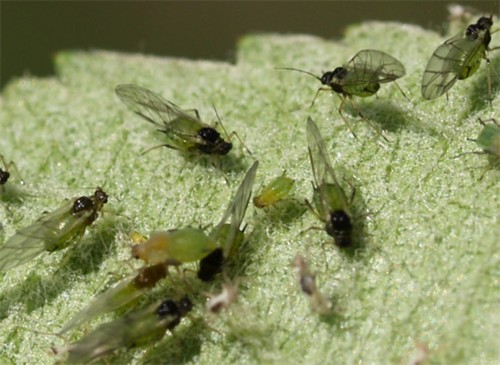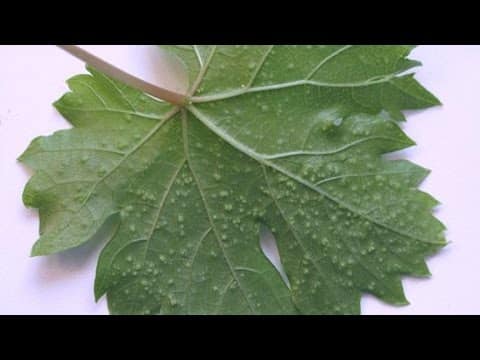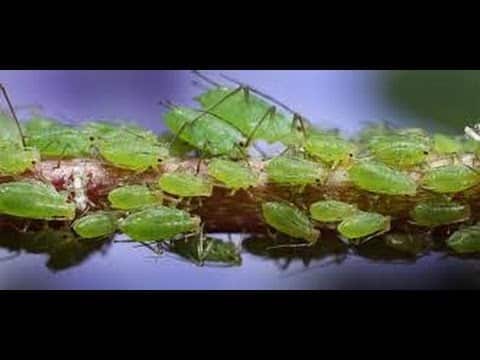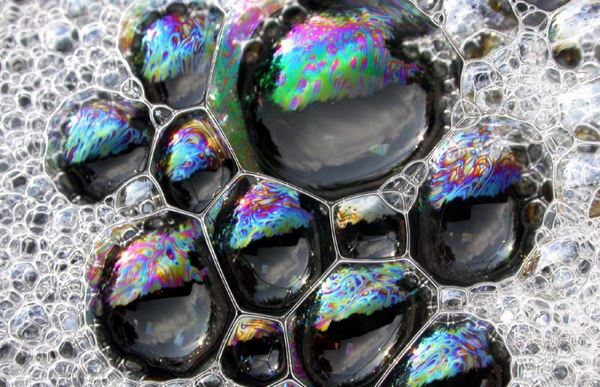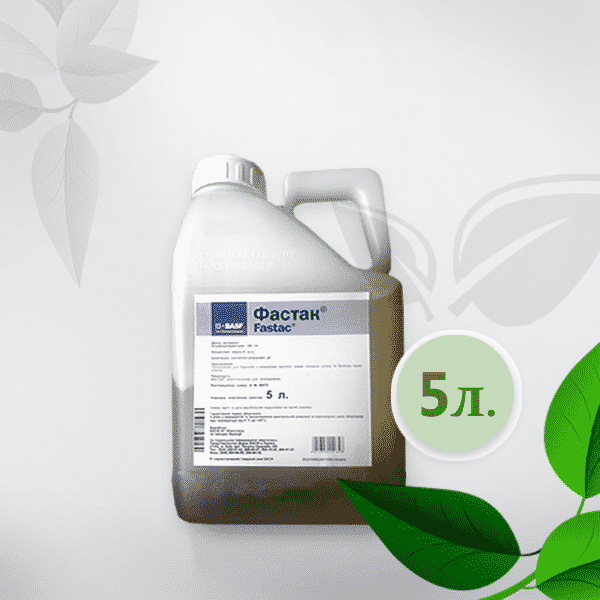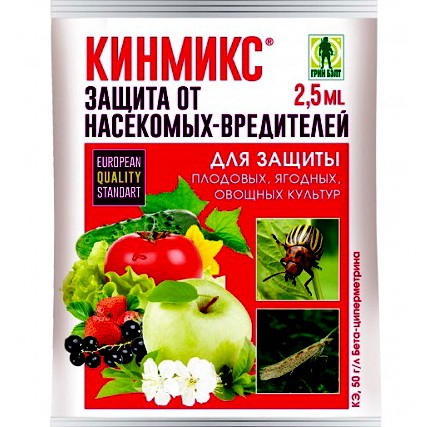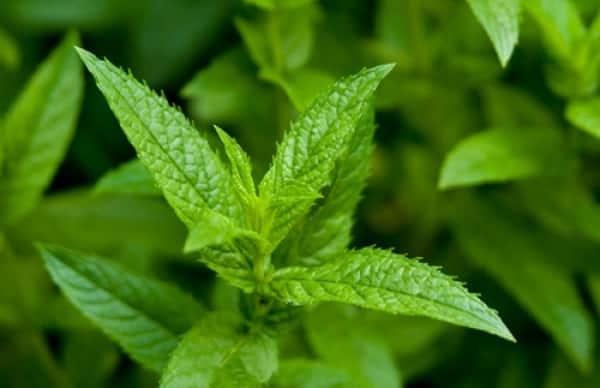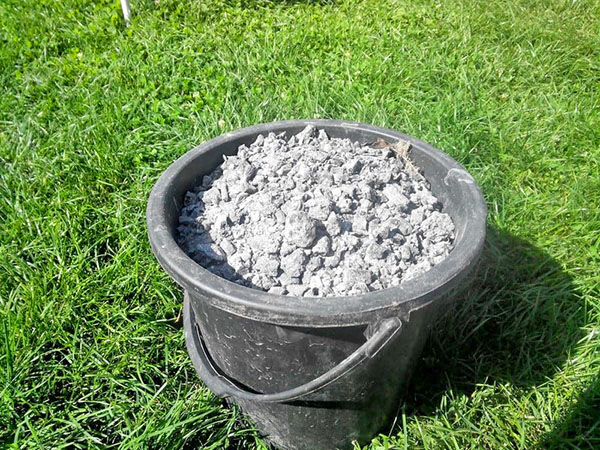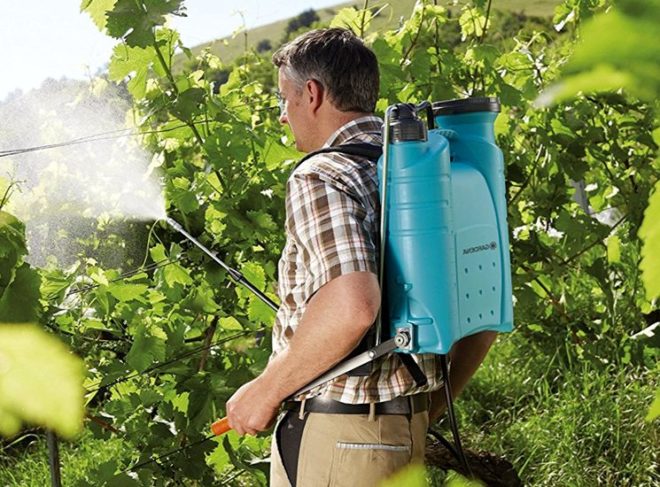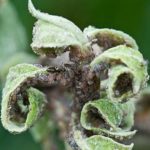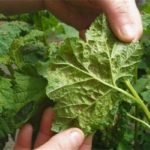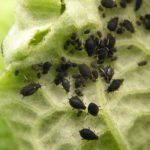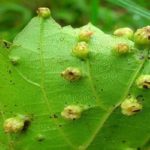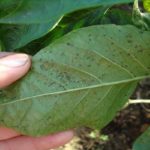Uninvited guests appear on garden favorites for various reasons: they are transferred from other plants, they can move from a neighboring area, or they can multiply due to the owner’s carelessness. What is white aphid in the vineyard and how to fight it is the topic of today’s discussion.
- Causes of midges
- What types of aphids grow on grapes?
- Root variety
- Winged
- Sexual
- Signs of vine infection
- How do aphids spread?
- Why is an insect infestation dangerous?
- Chemicals for processing
- Fastak
- Fozalon
- Aktellik
- Kinmiks
- Mechanical methods
- Biological agents
- Folk remedies
- Soap solution
- Tomato leaves
- Ash
- Proper care to prevent the appearance of a parasite
- Seasonal preventive measures
- Spring
- Summer
- Autumn
Causes of midges
There are several probable reasons why insect pests have settled on a grape bush. Sometimes the reason for this is ordinary ants, which use aphids like cows, specially breeding them to produce sweet milk.
There are 2 types of grape pests:
- living above, in the above-ground part;
- basal.
There is also an “intermediate” stage that connects both types. The source of aphids on grapes is wind, mud flow, sometimes these insects come on their own, attracted by the abundance of food. They multiply quite quickly, and if the aphid colony is not destroyed in time, the plants may die. Detection is seriously hampered by the fact that adult insects are inconspicuous and small - rarely exceeding 1.5 millimeters in length.
What types of aphids grow on grapes?
Three types of aphids parasitize grape bushes: root (underground), winged or gall aphids, and sexual aphids. They differ in size, appearance, habitats and life cycle.
Root aphids grow and feed below all their lives, destroying the underground part of the bush. Gall galls actively move (sometimes through the air), lay eggs on the leaves (swellings of a specific shape are formed - galls). The sexual form consists of males and females, its task is to carry out the only mating in its short life in order to carry an egg for wintering.
Root variety
Underground insects do not appear on the surface, affecting the roots and lower part of the stem. All of them are females, greenish-yellow or brown (not black) in color. The back is decorated with a pattern of symmetrical dots, and there is a proboscis on the head. Aphids have 3 pairs of limbs and 2 tentacles.
It reproduces by laying eggs.If the female manages to survive the winter, she lays about 800 eggs.
Subsequent generations are not as fertile. Therefore, when destroying the first masonry (by digging up the root zone), the owner can protect the plant and keep its root system intact.
Winged
The form is recognized by its “graceful” physique and the orange hue of its outer chitinous shells. They live above the ground and have rudimentary wings located above the upper (chest) pair of legs. They are called “nymphs” and come from the underground variety.
Getting to the surface, the aphid undergoes 3-4 molts and becomes winged. The length of the body is 1 millimeter, the color is yellowish, with light greenery or ocher. The limbs and tentacles are oblong, the wings are short, with their help “nymphs2” successfully move short distances. This "asexual" variety lays eggs on the undersides of leaves or on the surface of the bark.
The gall aphid got its name from the characteristic swellings that form on the leaf blades, reminiscent of a nut (galls), where it places its eggs. During the growth process, insects actively feed, suck the juice from the greens, destroying the grape bush. Some of the hatched larvae go down to the root: this completes the development cycle.
Sexual
Gall aphids lay eggs of 2 sizes: large ones carry females, small ones – males. This is how the sexual form appears. Its only task is to mate so that the female can lay a special, “winter” egg in a deep crevice in the bark.
Signs of vine infection
Aphids or phylloxera are considered one of the most dangerous enemies of grapes. It ends up on the bush, transferred with the wind, soil, water or from other plants (seedlings).The difficulty of detection lies in the fact that the insect has a complex life cycle and more than one form of development; it moves up and down the bush, destroying leaves and roots.
The underground species is difficult to identify due to its “secrecy” and the small size of the aphid. The gall form leaves marks on the leaves - this is what it parasitizes on. The foliage withers and becomes covered with growths. In general, any unnatural, depressed state of the vineyard is a reason to think about the presence of unwanted “guests”.
How do aphids spread?
Introduced with planting material and soil, the “underground inhabitants” begin to reproduce: asexual females lay eggs in the roots so that the hatched larvae can suck the juice out of them, gnaw passages and parasitize on the plant. Some of the juveniles rise to the surface, and this is how the transition occurs to stage 2, the gall stage.
It is possible that the life cycle goes in a different direction: the aphid descends underground to continue reproducing there. In any case, without taking effective preventive measures, the plant may die.
Why is an insect infestation dangerous?
If aphids appear on the grapes, this will not lead to anything good. The unpleasant guest will not disappear by itself, and if it does, it will only completely destroy the entire bush and neighboring plants. The alternation of life cycles (activity in spring-summer and hibernation in winter) makes it difficult to timely identify the source of phylloxera.
It can be underground, in the form of adult insects or larvae, on foliage (in clutches) or winged form, under the bark (in eggs laid for the winter). The voracious pest, despite its miniature size, is capable of causing significant damage to a grape plantation.
Chemicals for processing
To get rid of aphids, all methods are good, except extreme ones - cutting down and destroying the vineyard. Gardeners use pesticides by spraying the roots and upper part of the plant, pouring water, and treating with improvised means (soap solution).
Digging up the root zone and partially replacing the soil with sandy soil (aphids don’t like this) are effective. Pruning, removing fragments damaged by the pest, followed by burning in an open place, far from the bush, help a lot.
Fastak
A drug from the pyrethroid group affects the gastrointestinal tract of the parasite. It is not washed away by precipitation after watering. It is harmless to pollinators (bees), and produces an effect immediately after detection and treatment of aphid accumulation areas. Compatible with other fungicides and insecticides.
Fozalon
Available in powder form, it has a specific garlic smell. It has a long-lasting effect and is used at temperatures between 13-15 ºС if other methods do not help.
Aktellik
Chemical of organophosphorus origin. The grapes are treated with the prepared aqueous solution. Helps with relapse of repeated lesions. The disadvantage is toxicity to all insects, birds, and animals.
Kinmiks
Effectively affects adult aphids and young aphids (larvae). Apply during the growing season, once or twice.
Mechanical methods
These include collecting damaged leaves (eaten or containing eggs), loosening the root zone. In combination with other methods it can help achieve significant results.
Biological agents
To combat aphids, natural methods are used, for example, planting peppermint near the vineyard. The tart smell repels the parasite and protects the bush from damage.
Folk remedies
There are situations when the use of chemicals is undesirable or unacceptable, then traditional methods will help. For them, they use “decoctions” and “tinctures” prepared according to amateur recipes, which are used to water the affected plant.
Soap solution
For 500 milliliters of water, take 2 teaspoons of liquid soap solution, mix, add a tablespoon of sunflower oil. Spray the leaves, stem, and ground.
Tomato leaves
The fragrant leaves of nightshades are not to the liking of the garden pest. 500 grams of tomato tops are poured with 10 liters of water and left for 24 hours. Can be replaced with potato leaves. It is considered an effective remedy for combating aphids, devoid of toxic side effects.
Ash
Harmless to animals and bees, dangerous to aphids. Diluted in water; The above-ground part is treated with the resulting solution and the roots are watered.
Proper care to prevent the appearance of a parasite
The secret of proper care lies in sanitizing the seedlings before planting: most often, aphids settle there. Insecticide solutions (soaking) are used. If grapes are damaged, one of the following methods can be used: pouring water for a long period (14-21 days), mechanical removal of surface roots with signs of damage, deep excavation of soil and replacement with a sand mixture.
Seasonal preventive measures
At the beginning of the growing season, it is useful to spray the grapes with chemicals, and in the fall, loosen the root zone and trim leaves with traces of the presence of the pest.
Spring
If the lesion is detected at the initial stage, treatment with an insecticide, mechanical removal of damaged leaves followed by burning, and repeated spraying after a few days will be sufficient.
Summer
In July, if the symptoms of the “disease” have not disappeared, they are re-treated with pesticides. Experienced gardeners know that it is not so easy to remove phylloxera, so you will have to spray the grapes often and regularly.
Autumn
After harvesting, remove damaged fragments of foliage and shoots, loosen the soil, cut off surface roots - all areas where aphids could gain a foothold, lay eggs or hide for the winter. The more larvae and adult insects die, unable to hide from the cold, the better the renewed plant will feel in the spring.

